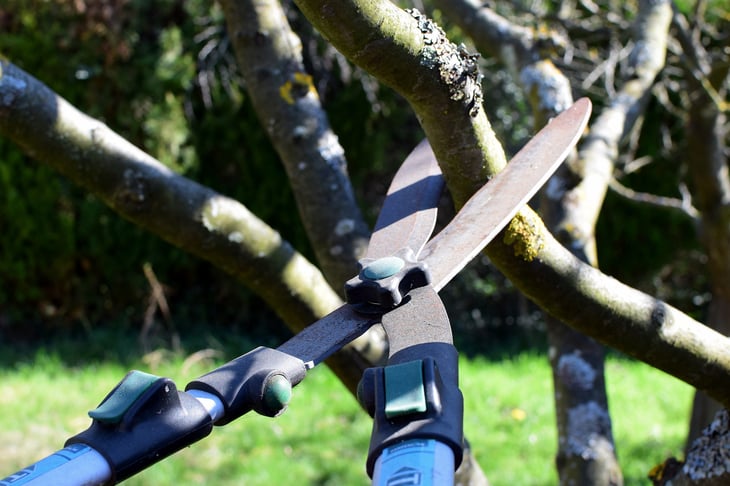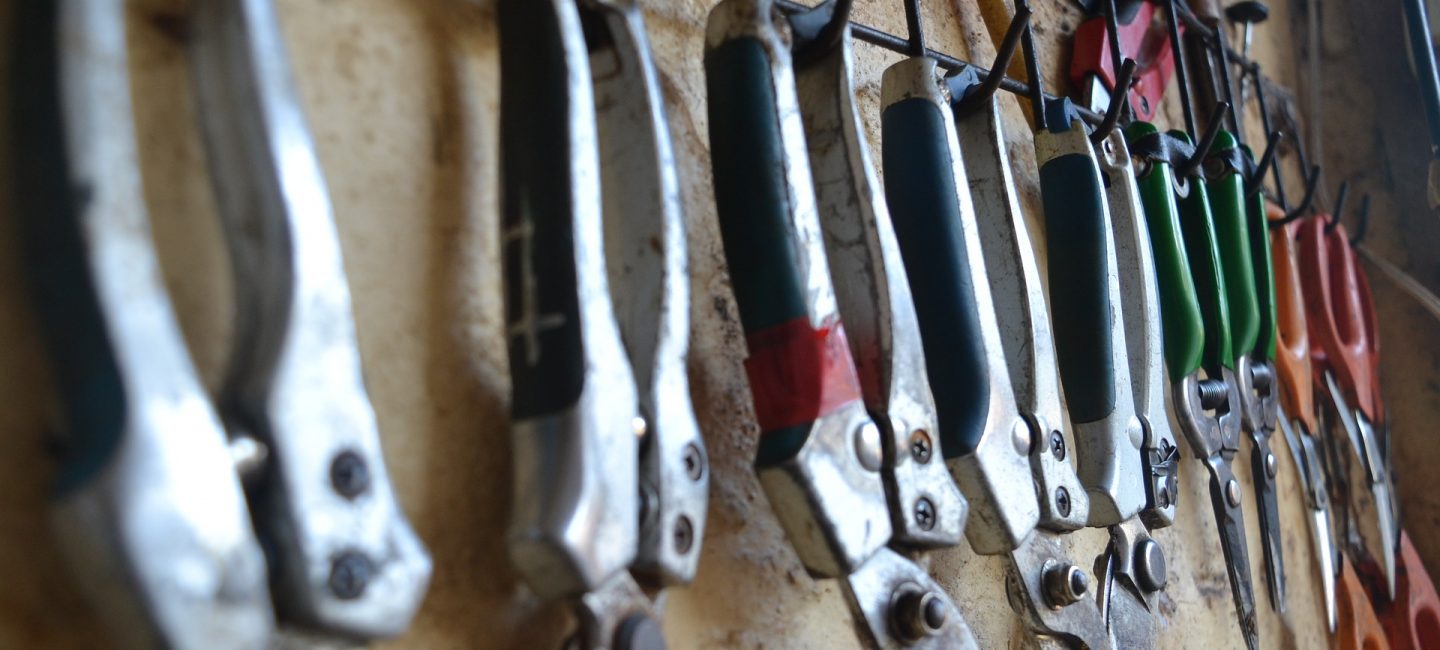As winter begins, most gardeners relish abandoning their extensive list of daily garden chores that go along with the growing season. As the holidays approach we get lost in a whole new schedule of things to do. Now that the revelry has come to an end, the desire to garden often comes creeping back—just in time for late winter garden tasks.
PRUNING
Late winter and early spring are the best times to prune most deciduous trees and shrubs, with the exception of spring bloomers. Pruning while a tree is dormant allows it to recover before spring growth starts. It also lessens potential trouble from insects, fungus or bacteria invading the plant through the opened wound before it has time to heal. It also is easier to see the form and structure of a tree when it is not leafed out. 
The first step in pruning trees or shrubs is to remove any material that is dead, dying or diseased. This will dramatically increase the health of your plants. After removing unhealthy limbs and branches, now remove material to size, shape and structurally improve the form of your woody plants. If this seems too much for you to accomplish currently, consider seeking out a class, like our Winter Pruning Series, starting on February 26, or our Early Training of Young Trees class on March 2. You can also look up videos or articles written by experts on how to prune. A little time and effort will go a long way in improving the health and wellbeing of the longest lived members of your yard and gardens.
If you have trees that need to be removed from your property altogether, less damage is often done to frozen lawns and dormant gardens than might happen during the growing season.
CUTTING BACK ROSES
Although most spring and early summer blooming plants prefer to be pruned just after their flowers expire, roses benefit from pruning in late winter. Modern landscape roses need much less pruning than hybrid tea roses, grandiflora and climbing roses require. With any type of rose bush, begin pruning by removing any dead, dying or diseased canes. Then cut out any old, thick, dark colored canes down to the crown. Remove any canes that cross and rub. After completing those steps, further pruning can be done to shape the plant, to improve air circulation as well as to reduce the plant’s height and width.
SOIL TEST
Soil is arguably the single most important component of a healthy, beautiful yard and garden. No other effort you make in your garden will be more rewarded than any effort you make to improve the soil.
Begin by getting your garden soil tested. Although you can buy inexpensive tests at home improvement stores, the most accurate and comprehensive test will be preformed by a reputable soil testing laboratory. Soil testing will ensure your plants have the correct pH and nutrient levels to grow to their full potential. Soil testing for homeowners living in Massachusetts or Rhode Island are conducted at University of Massachusetts Amherst.
Take your soil samples as soon as the frostline allows by following the instructions on the UMass Amherst website. Be sure to dry out your soil samples before mailing them in as wet samples can not be processed. After the test is completed, you will receive instructions on how to amend your soil for the best growing results. Correcting your soil prior to the growing season, before planting, will make it easier to incorporate the recommend amendments to your gardens and yard.
FIX DAMAGED HARDSCAPES
Walk around your yard and gardens to examine the condition of fences, walls, walkways and structures. Correct any damage or wear now before the garden season begins and you’re occupied by more interesting gardening jobs.
If any of the repair work on your hardscape is beyond your desire or ability to complete, you will find it easier to contract with an outside firm in winter before their spring busy season.
SHARPEN AND OIL TOOLS
Begin getting your tools ready for spring by assembling any equipment in need of rehabilitation. Separate tools with sharp cutting edges such as pruners and loppers from shovels, spades and hoes.
Clean the blades of your fine edged cutting tools with isopropyl alcohol on a cotton shop rag; this will keep your blades from rusting or the mechanism from loosing its lubrication. After cleaning all the cutting surfaces, sharpen all the cutting edges with a wet stone or a honing stone. If you prefer, bring them to be professionally sharpened—do it now in winter when practitioners are less busy.
Use a wire brush to remove any debris from your digging tools. If this is not sufficient to eliminate all the dirt, soak your tools in a five gallon bucket of warm water and a teaspoon of dish soap. Dry your tools when you remove them from the bucket to prevent rust. If your tools already have rusty spots, sand with heavy grit sandpaper. Sharpen digging edges of the tools with a metal file or grinding wheel. After cleaning and sharping your tools, apply a thin coat of oil to preserve your work.
Consider making a tool cleaning station for the garden season to come. Find a bucket with a diameter as big as your widest tool. Fill the bucket with play sand, then add and mix in enough oil to darken the sand. Stick an old putty knife into the sand that you can use to remove large clumps of dirt that might stick on your tools. Every time you finish using your tools, knock the large blobs of soil off heads, then plunge them in the bucket to clean and oil them before putting them away. This will increase the efficiency and life of your garden tools.
PLAN NEW GARDEN PROJECTS
Winter is a great time for dreaming up and working out new yard and garden endeavors. It is easier to see your gardens structure when flowers and foliage are dormant. Measuring existing garden spaces does less damage when the soil is frozen and plants are not actively growing. You will be more successful finding the materials you will need and booking projects with contractors should you need professional help now before their spring busy season.
It may not feel like it right now, but spring will be here soon. Completing these chores now will set the stage for your best gardening season ever, so get to it!

